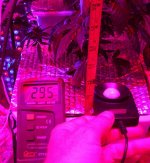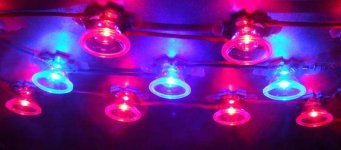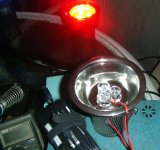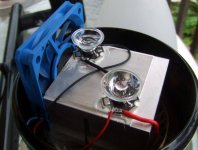Quick answer...
Quick answer...
10 Watts!

Sorry. Sometimes I jus' gotta.
Read on fo' da long answer.
Actually, with me, it's all about lazy.
The 15W dies are really 4. 5 watt dies with a single lens and substrate.
2/3rds of the wiring and solderin' has already been done for me!
If I take 4, discrete 5W. emitters and jam them into clusters on the heat sink n wire 'em up, I still don't get the penetration that a single lens 15 gives me.
There's also a smaller angle.
The 5s are 180 degree, or lambertian.
The Inverse Square Law strictly applies.
The 15's are 120 degree. Penetrates mo' betta.

I have some bricks that I built from the 5Watt leds and they work fine.
But the 15W. emitters been buildin' better bottom buds.
'Zat he'p?
Aloha,
Old Zard
Quick answer...
Hey Weezard,
Quick question....what do you see as an advantage to using the 15w 660nm LedEngine vs using the 5w ones?
10 Watts!
Sorry. Sometimes I jus' gotta.
Read on fo' da long answer.
Actually, with me, it's all about lazy.
The 15W dies are really 4. 5 watt dies with a single lens and substrate.
2/3rds of the wiring and solderin' has already been done for me!
If I take 4, discrete 5W. emitters and jam them into clusters on the heat sink n wire 'em up, I still don't get the penetration that a single lens 15 gives me.
There's also a smaller angle.
The 5s are 180 degree, or lambertian.
The Inverse Square Law strictly applies.

The 15's are 120 degree. Penetrates mo' betta.

I have some bricks that I built from the 5Watt leds and they work fine.
But the 15W. emitters been buildin' better bottom buds.
'Zat he'p?
Aloha,
Old Zard



 (
( )
)







